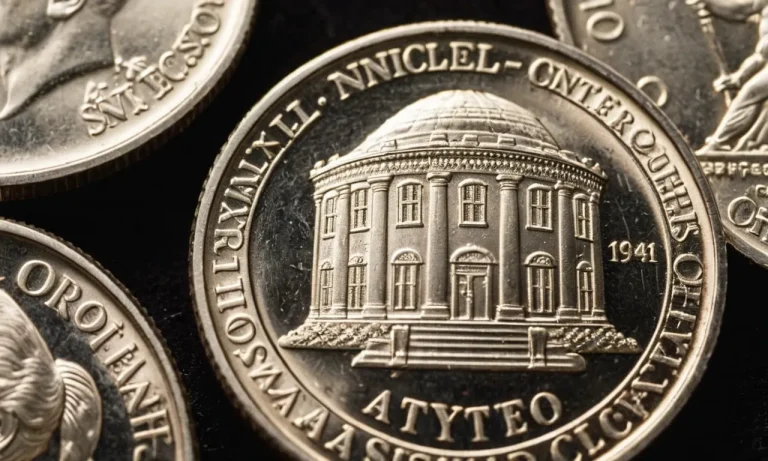The $100 bill, often called a C-note or Benjamin, holds a special place in American culture and finances. With its large denomination and distinctive design, the $100 bill symbolizes wealth and evokes intrigue.
If you’ve come across a $100 bill and want to know more about its history and features, read on for a comprehensive overview.
In short: The $100 bill is the highest-value banknote currently in circulation in the United States. First issued in 1929, the $100 bill features statesman Benjamin Franklin on the face and a vignette of Independence Hall on the back.
The $100 bill gets a new, more secure design approximately every 7-10 years to stay ahead of counterfeiting threats.
Background and History of the $100 Bill
The $100 bill was first issued in 1929
The $100 bill has a long and interesting history dating back to its first issuance in 1929. This was a result of the Federal Reserve Act of 1913, which established the Federal Reserve System and authorized the printing of Federal Reserve Notes.
The $100 bill was introduced as a means to facilitate large transactions and to serve as a store of value.
Since its introduction, the $100 bill has become one of the most widely recognized and circulated denominations in the United States. Its distinct green color and iconic design make it easily distinguishable from other bills.
Franklin has been featured on the $100 since 1914
One interesting fact about the $100 bill is that it features the portrait of Benjamin Franklin, one of the Founding Fathers of the United States. Franklin’s image has been on the $100 bill since 1914, making it one of the longest-running designs in U.S. currency history.
Franklin was chosen to be featured on the $100 bill due to his significant contributions to American society. He was not only a statesman and diplomat but also a renowned inventor and scientist. Franklin’s image serves as a tribute to his multifaceted accomplishments and his role in shaping the nation.
The $100 bill gets updated periodically for security
To combat counterfeiting and stay ahead of evolving security threats, the $100 bill undergoes periodic updates. The most recent redesign was unveiled in 2013, which incorporated advanced security features to make it more difficult to replicate.
Some of the security features of the current $100 bill include a 3D security ribbon, color-shifting ink, and a watermark portrait of Benjamin Franklin that can be seen when held up to the light. These features, along with others, make the $100 bill one of the most secure denominations in circulation.
If you want to learn more about the history and security features of the $100 bill, you can visit the U.S. Currency Education Program website, which provides in-depth information and resources on U.S. currency.
Design and Security Features
The current $100 bill design debuted in 2013, showcasing a blend of modernity and tradition. The bill features a portrait of Benjamin Franklin on the front, along with a quill pen and an inkwell. The back of the bill displays an image of Independence Hall in Philadelphia, a symbol of American democracy.
The current $100 bill design debuted in 2013
The design of the $100 bill underwent a significant makeover in 2013 to incorporate advanced security features. The aim was to make the bill more difficult to counterfeit. The new design includes intricate details and color-shifting ink that gives the bill a unique appearance.
One notable change is the addition of a 3D security ribbon, which is woven into the paper. When tilted, the ribbon displays images of bells and 100s that move in the opposite direction. This feature makes it easier for both the public and merchants to verify the authenticity of the bill.
It has numerous anti-counterfeiting features
The $100 bill is equipped with a variety of security features that make it highly resistant to counterfeiting. These include:
- Color-shifting ink: The color of the “100” on the bottom right corner of the bill changes from copper to green when tilted.
- Watermark: A faint image of Benjamin Franklin can be seen when the bill is held up to the light.
- Security thread: A thin strip embedded in the bill glows pink when exposed to ultraviolet light.
- Microprinting: Tiny words and numbers are printed on various parts of the bill and can be seen under magnification.
The security ribbon and bell in the inkwell are key identifiers
The security ribbon and the bell in the inkwell are two essential identifiers that help determine the authenticity of the $100 bill. The security ribbon runs vertically to the right of Franklin’s portrait.
When the bill is tilted, the bells and “100” move in the opposite direction, making it difficult to replicate.
The bell in the inkwell is another crucial feature. When the bill is tilted, the color of the bell changes from copper to green. Additionally, the bell appears to emerge from the inkwell, giving it a three-dimensional effect.
These distinctive features make the $100 bill highly secure and difficult to counterfeit.
For more detailed information on the design and security features of the $100 bill, you can visit the official website of the U.S. Currency Education Program.
Fun Facts About the $100 Bill
There are over 12 billion $100 notes in circulation
The $100 bill, also known as the “Benjamin,” is one of the most widely circulated denominations of U.S. currency. In fact, there are currently over 12.4 billion $100 notes in circulation worldwide. This staggering number reflects the popularity and widespread use of the $100 bill in daily transactions.
80% of them are held overseas
While the $100 bill is commonly used in the United States, it may come as a surprise that a large majority of these bills are actually held overseas. According to the Federal Reserve, approximately 80% of all $100 bills are estimated to be held outside of the country.
This is due to the global demand for U.S. currency, particularly in countries where the local currency may be unstable or less widely accepted.
The average $100 bill lasts 15 years in circulation
Despite being one of the most frequently used denominations, the $100 bill has an impressive lifespan. On average, a $100 bill remains in circulation for about 15 years before it is taken out of circulation and replaced with a new one.
This is significantly longer than the lifespan of smaller denominations, such as the $1 bill, which typically lasts around 5.8 years.
For more information on the $100 bill and other U.S. currency, you can visit the U.S. Currency Education Program website.
Uses and Popularity of the $100 Bill
The $100 bill, also known as the “Benjamin” or “C-note,” is one of the most widely used and recognized currencies in the United States. Here are a few reasons why the $100 bill is so popular:
The $100 bill facilitates large cash transactions
Due to its high value, the $100 bill is often used for large cash transactions. From purchasing expensive items like electronics or jewelry to paying for services like home renovations or car repairs, the $100 bill provides a convenient way to handle significant sums of money in a single transaction.
Its widespread acceptance makes it a preferred choice for both individuals and businesses.
It’s popular among criminals due to its high value
Unfortunately, the $100 bill’s popularity extends beyond legitimate use. Its high value makes it an attractive form of currency for criminal activities such as money laundering, drug trafficking, and illegal transactions.
This is due to its compact size and ability to hold substantial purchasing power. Law enforcement agencies around the world actively monitor the circulation of $100 bills to combat illicit activities.
Many people associate it with wealth and status
In popular culture, the $100 bill is often associated with wealth and status. From movies to music videos, the image of someone flaunting a stack of $100 bills has become a symbol of affluence. While this perception may not accurately reflect the financial realities for most people, it has contributed to the $100 bill’s cultural significance and desirability among some individuals.
It’s important to note that the Federal Reserve constantly monitors the circulation and demand for different denominations of currency. They make decisions about printing new bills or retiring older ones based on various factors, including usage patterns and counterfeit risks.
Everything You Need To Know About The $100 C Note – Conclusion
With its distinctive Benjamin Franklin portrait and array of security features, the $100 bill has an air of prestige unmatched by other denominations. Though rarely used in everyday transactions, the $100 bill allows for convenient high-value payments and serves an important role in the U.S. and global economy.
Next time you get your hands on a crisp new $100, take a closer look – you’re holding a fascinating and complex piece of history in your hand.






